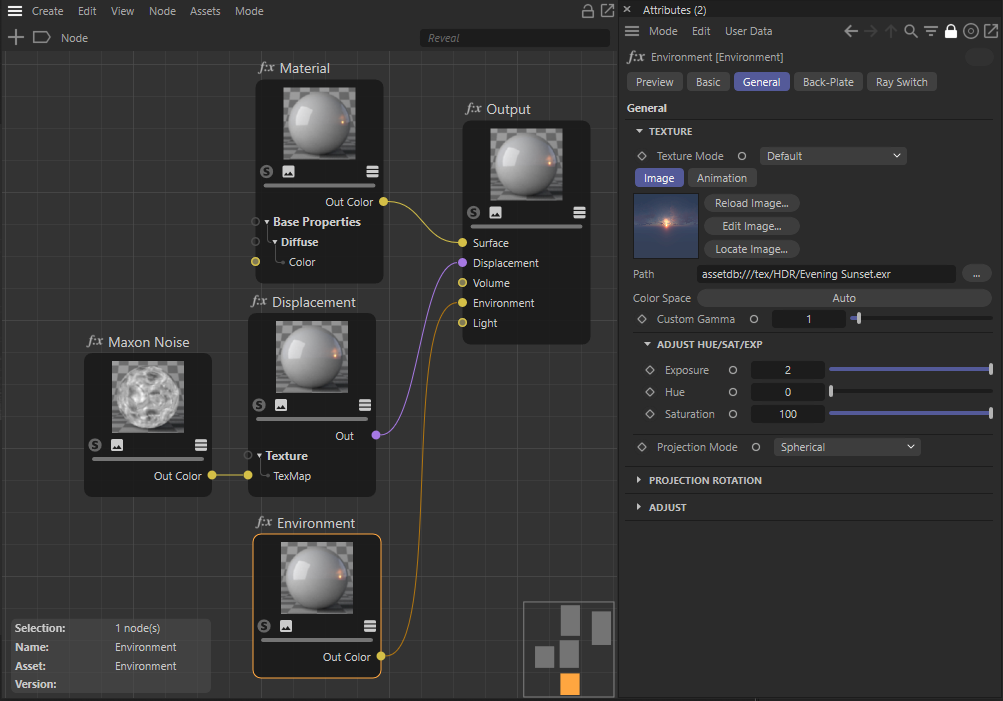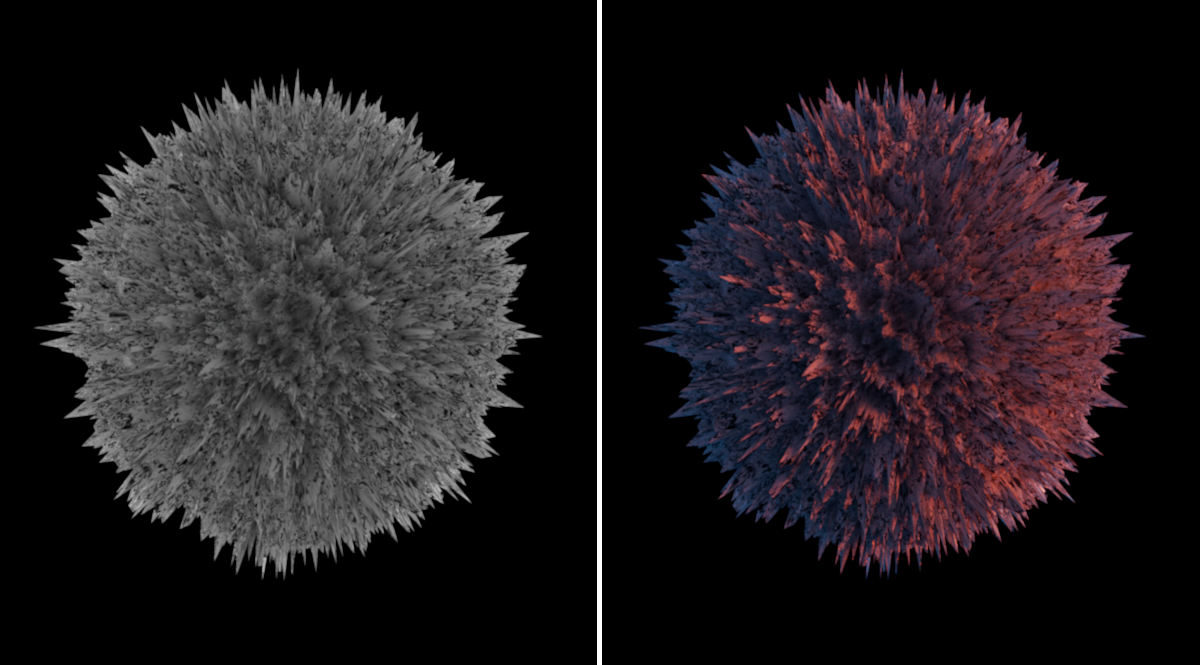Table Of Contents
Introduction
When you create a new Redshift material, an Output node is already present. This represents the actual material within the shader node environment and collects the definitions for the material via its inputs. In many cases, it is sufficient to connect the Surface input, because all color, luminance, reflectance, transparency and bump/normal mapping properties are already exchanged via this input. Therefore, for many materials, the connection of a Redshift Material node is sufficient.
In addition to the Surface properties, some other material definitions can be made using the other inputs on this node, e.g. for Displacement. For some special materials it is necessary to use the inputs for Volume, Environment or Light instead of the Surface input.
Inputs
Surface
This port is expecting a container of colors and definitions for diffuse, reflectivity, transparency, luminance and bump/normal mapping as it is output, for example, by the Material node oder the Car Paint node.
Displacement
This port expects displacement information as output by the Displacement node. This attribute can be combined with the Surface definition to add deformations to the mapped geometry. By using the Redshift Object Tag for the mapped object, you can add additional subdivisions to the geometry at render time to achieve a more defined displacement, even for low-resolution objects.
Volume
This input expects volume information as output by the Volume node. This combination is needed to render volumetric smoke, clouds, fire or explosions loaded with the Redshift Volume object.
Environment
This input expects color information, for example, from an Environment node, but even a simple color will work here as well. This input can be used together with Surface or Displacement to include a virtual environment to the material, that is used for reflection simulation. Another usecase would be to just use the Environment input at the Output node to create an environment definition, that can be used as Environment within the Redshift Camera Tag or as global environment in the Redshift Render Settings (Globals/Options/Default Environment).

The Environment information can be used to create virtual surroundinsg for the material.

The left side shows the result when using a simple, white Color node for the environment of a displaced sphere. The effect is similar to using a Dome Light or Ambient Occlusion shading. The right is using a sunset HDR image loaded into an Environment node and connected to the Environment at the Output node.
Light
This is a special input for the Redshift Light nodes (Dome Light, IES Light, Physical Light, Portal Light and Sun Light). These shaders allow you to control general parameters of Redshift Light objects from within the node environment when the material is applied to a Redshift Light.
Material ID
Using a value above 0, you can use this ID in combination with a Puzzle Matte AOV layer to output masks for the objects that are rendered with this material. See AOV Topics for details about rendering with AOVs